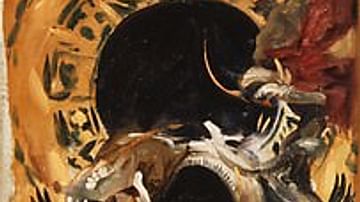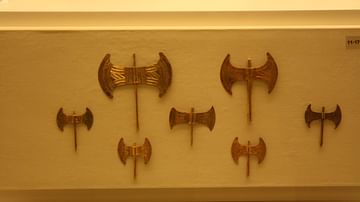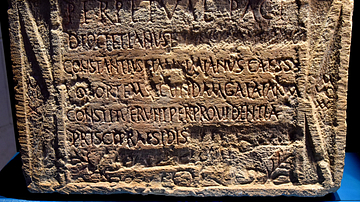Server Costs Fundraiser 2024
Illustration
This limestone head probably represents the goddess Astarte. Some of the ivory inlays still remain within the eye sockets while holes on the collar were probably for inlay decorations. Four such heads were discovered together in 1968 CE and a fifth one was found in 2011 CE. They have holes on the top and bottom and were probably set as a balustrade in the window of an Ammonite temple, to give a chance to devotees praying outside to see one face, while priests in the holy interior could see the other face. Iron Age II mid-8th century BCE. From Amman Citadel, Jordan. (The Jordan Museum, Amman, Jordan).
About the Author
Cite This Work
APA Style
Amin, O. S. M. (2019, February 18). Double-Faced Female Figure of Astarte[?]. World History Encyclopedia. Retrieved from https://www.worldhistory.org/image/10079/double-faced-female-figure-of-astarte/
Chicago Style
Amin, Osama Shukir Muhammed. "Double-Faced Female Figure of Astarte[?]." World History Encyclopedia. Last modified February 18, 2019. https://www.worldhistory.org/image/10079/double-faced-female-figure-of-astarte/.
MLA Style
Amin, Osama Shukir Muhammed. "Double-Faced Female Figure of Astarte[?]." World History Encyclopedia. World History Encyclopedia, 18 Feb 2019. Web. 26 Jul 2024.

![Double-Faced Female Figure of Astarte[?]](/img/r/p/750x750/10079.jpg?v=1655485985)






